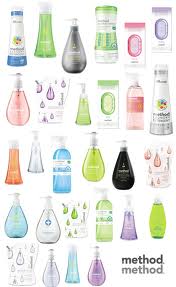
INNOVATION, it’s what we’re all seeking today in the consumer packaged goods (CPG) industry.
Yet, why has it been so challenging to implement?
A. Manufacturing processes, long-established infrastructure and supplier relationship and a quick eye for profits encumber today's CPG companies.
While there are facelifts and graphic changes taking place with packaging redesigns, companies are resisting investing resources into making profound packaging changes.
The resistance is largely because companies have invested enormous resources into owing their own manufacturing equipment and factories.
B. The "innovation resistance" is mainly on "consumables", which are products that are perishable and or consumed at a high rate.
Durables , such as consumer electronics packaging and toy packaging, cosmetics, are not consumed at the same rate and aren't perishable, so they can be packaged overseas and by hand.
Consumables, instead typically require an automated filling infrastructure.
This type of infrastructure is a huge investment for a company. Once that investment has been made, companies really don't want to negatively impact it by having to change it.
C. The factories of the end-users companies are set-up to optimize the production of yesterday's ideas and are unable to satisfy tomorrow's needs.
The consumable products industry derives much of its profit from economic scale and efficiencies.
They can produce packaged product inexpensively due to the efficiency of high volume /high speed production and it's their investment in high speed/volume automated manufacturing that makes this possible.
This investment encumbers change because equipment is typically built to do thing efficiently and not oriented to design or personalization.
Consequently a company often cannot afford to change their existing equipment before it has been depreciated.
Also changes takes time!
Most companies won't tolerate the time associated with the changeover.
Change is the "antithesis" to efficiency (= costs saving) and so is costly and in hard economic period like that is though to accept.
D. Many consumer products sold on the market compete purely on cost! Profits are often derived from reducing the cost of raw material used and packaging for many buyers is the main cost to be reduced.
This strategy and attitude may have worked for a while but not for ever; Private Label has become more sophisticated and their product quality has improved to the point of parity in some instances that they can do it cheaper than a Brand Company.
The focus for national brands need to be on providing a value-added point of difference by creating a better experience.
When you have a point of difference by creating a better experience, you can typically command a higher price and packaging can play a strategic role in achieving that key target.
E. So Brand companies must stop thinking of packaging as an "expense" and start thinking of it as an "Investment".
The world has changed and packaging is the newly discover "brand ambassador" and the value-added differentiator, as advertising has become fragmented.
There are naive expectations that a profound structural packaging change can happen quickly and without a financial outlay.
Appropriate time and inventive freedom needs to be given to packaging exploration so as to create something different.
Source : Packaging Strategy - Interview to Peter Clarke - Product Ventures

[ add comment ] ( 81 views ) | permalink |




 ( 3 / 2222 )
( 3 / 2222 )

 Calendar
Calendar